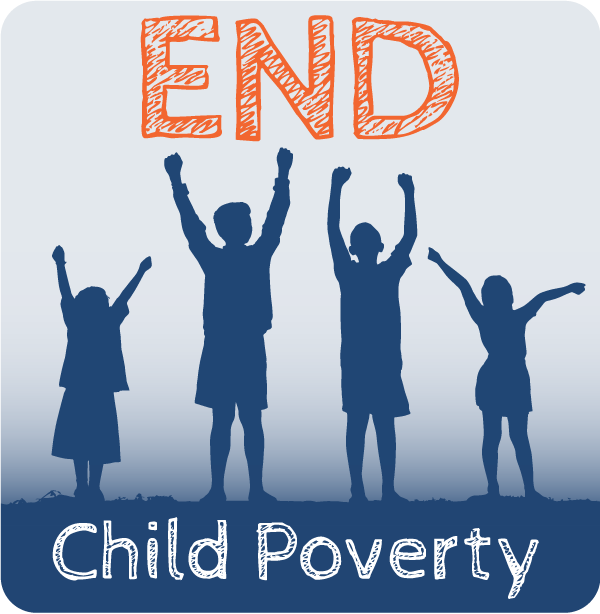Single Parent Payment kept us out of poverty
By Sarah Quinton co-writer Toni Wren
When I was 11 years old, growing up in the eastern suburbs of Perth, my fun was had by hiding in trees and playing in storm water drains with my four brothers and sisters. With a roof over our heads and warm beds, we enjoyed the 80s classics of meat and three veg or spaghetti, followed by two fruits and ice cream on the regular.
Looking back, I recall the pyramid scheme of hand me down clothes, op shop shoes, subsidised school excursions and driving distance holiday destinations.
Anything new was saved for Christmas, bought in matching sets, my older sister got pink, I got blue, of everything.
But the reality was that when my father left, my mother raised five children on her own. Without any child support, we survived on the Single Parent Payment.
This was in 1991, a year past Bob Hawke’s self-imposed deadline that ‘no child should live in poverty in Australia’.
The Single Parent Payment in those days was eligible to children aged 16 and under, which for my mother kept her and us out of severe poverty, that roof over our heads and meals on the table.
Thousands of other Australia families and children avoided poverty.
That was until in July, 2006, as one of his last acts as Prime Minister, John Howard reduced the age to 8 years old.
Seventeen years on, a child’s lifetime, for children growing up in single mother families today, payments are just not enough.
This, among many other political decisions has more than doubled Australia’s child poverty rate from a record low of 8 per cent in 1990 to 17 per cent in 2024. It hasn’t gone down in ten years.
In 2019-20, ACOSS/UNSW found 72 per cent of Parenting Payment Single recipients were at risk of living in poverty and that children living in single parent families have a poverty rate of 39 per cent, more than three times that of couple families (12 per cent).
While many of us are feeling this cost-of-living crisis, single parent families face the greatest challenges.
The Melbourne Institute’s Taking the Pulse of the Nation survey published in November 2023 found more than 8 in 10 (84 per cent) of single parents aged 25 to 54 years reported challenges paying for food, housing, utility bill and/or health, higher than any other family type.
This has had deep consequences for the mental wellbeing and connection to community for the 761,000 Australia children who live in poverty today.
Percentage of Australian children living in poverty since 1983
Child poverty is a political decision. No matter what decade you are born into, or what family, every Australia child deserves the right to an equitable start.
The cost to catch up on 17 years of mental health support, unemployment, health costs, lost productivity and a higher youth suicide rate, has now far outweighed the cost to keep the Single Parent Payment in the first place.
We are calling on the Government to legislate the changes that work to reduce child poverty in Australia. Fixing the maintaining income support is a good start.
Join the campaign www.endchildpoverty.com.au
Winning, and then losing, the Sole Parent Pension
1974 The Whitlam Government introduced the Sole Parent Pension in 1974. The payment has played a vital role in helping many women to escape from difficult or violent relationships and in reducing poverty among children.
1998 The Sole Parent Pension was abolished by the Howard government and was replaced by Parenting Payment Single (PPS) which continued to be paid until the youngest child turned 16. The rate of payment and income tests also remained the same as for the age pension.
2006 The Howard government made substantial changes to the PPS as part of a welfare to work program. Single parents claiming the payment after 1 July would lose it when their youngest child turns eight. Those parents could then claim the much lower Newstart unemployment benefit and be expected to look for work from when their youngest child turned 6. Parents receiving Parenting Payment Single before 1 July 2006 were “grandfathered” meaning they could continue to receive it until their youngest child turned 16.
2009 The Rudd government lowered the wages benchmark so that Parenting Payment Single was set at 25% of male total average weekly earnings instead of 27.7%, effectively breaking the link between the PPS and pension payments. Parenting payments were also excluded from the Harmer Review into the adequacy of payments. The one-off $32 a week increase granted to age, disability and carer pension recipients in September 2009 did not go to Parenting Payment Single recipients, further widening the gap.
1 July 2013 Approximately 80,000 sole parent families with children 8 years and older who had previously been “grandfathered” from the Coalition 2006 measures, were transferred from Parenting Payment Single to the lower Newstart Allowance by the Gillard government. Parenting Payment Single was effectively treated the same as JobSeeker and other non-pension working age payments and received the Coronavirus Supplement during the pandemic and $50 per fortnight permanent increase when the Supplement ceased.
2024 The Albanese Government increased the eligibility of Parenting Payment Single from 8 to 14 in its 2023-24 Budget. Approximately 80,000 families transferred to the higher payment in September 2024, increasing their payments by ~$100 a week and providing a less harsh income test so they kept more of their part-time earnings.
While the Budget increased the age of eligibility it did not extend the $40 a fortnight increase paid to other working age payments to Parenting Payment Single. The payment is now neither linked to pensions nor payments such as JobSeeker, so any increases above inflation do not automatically flow to them.

